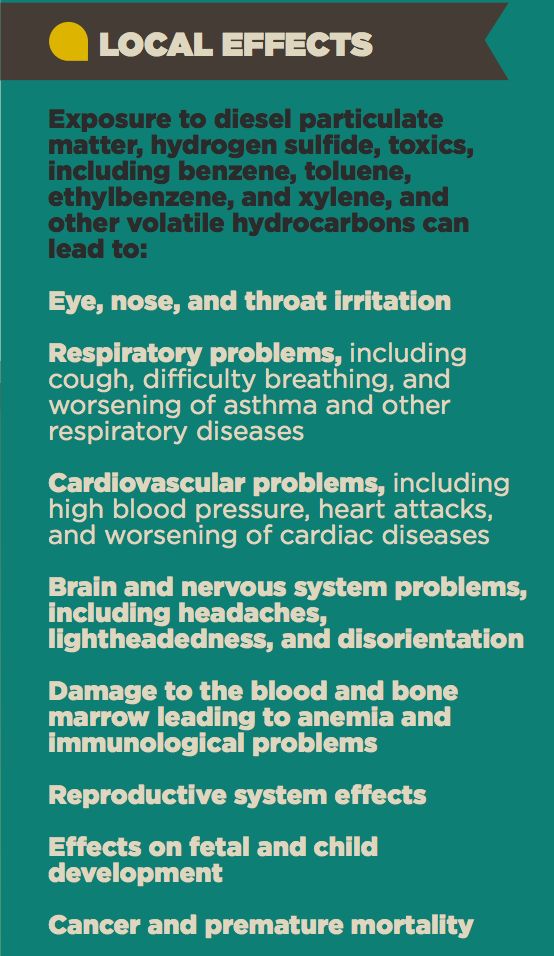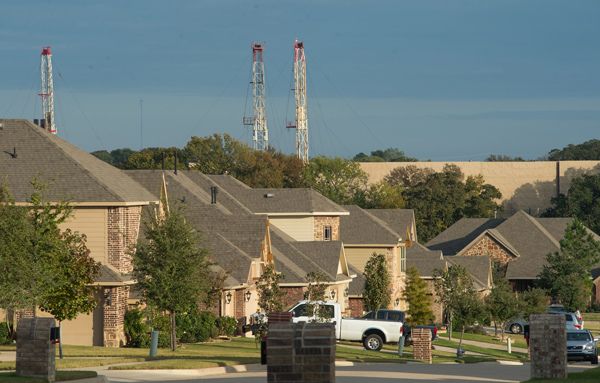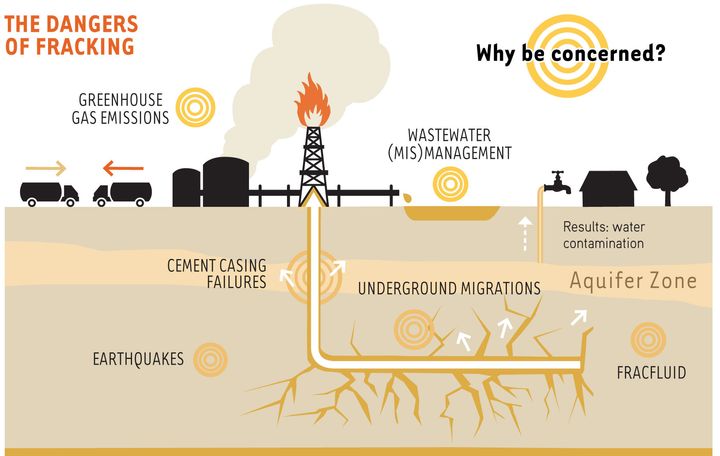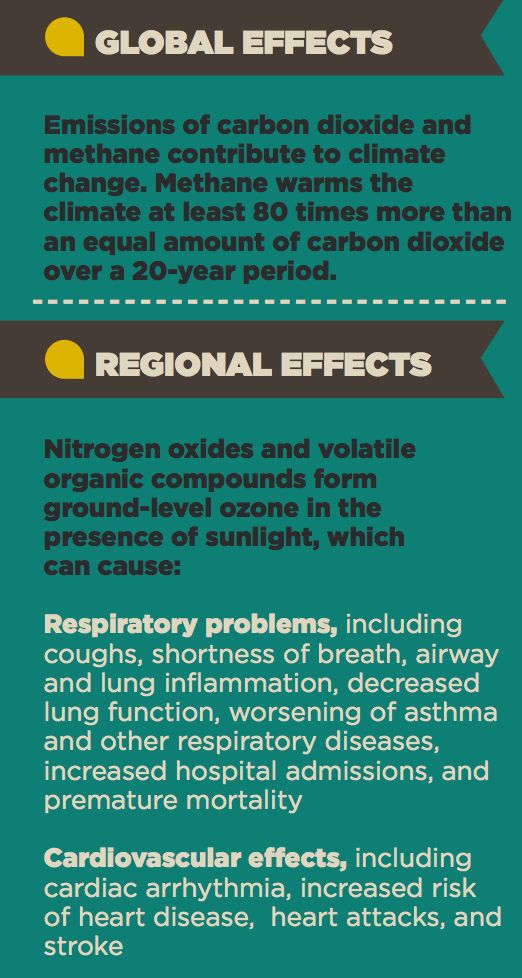Feb. 7 of 2017 was a sad day for the Native Americans of Standing Rock in their fight against the establishment of the Dakota Access Pipeline (DAPL). The U.S. Army Corps of Engineers granted the final easement needed to finish the pipeline’s construction. This was done after President Trump signed an executive action ordering them to move forward with the project, but before its environmental impact assessment and the public comment period associated with it were completed. Such a move is not only a disgrace to the principles of environmental justice as set out by the EPA, it is also incredibly dangerous.

Local effects of hydraulic fracturing on public health.
Over the past few years, North Dakota has been able to experience a serious oil and gas industry boom, leading up to the construction of the DAPL. In large part, this has been due to the development of unconventional methods for oil and gas extraction like hydraulic fracturing and horizontal drilling, which are now the primary mode of production in the area. It is a widely known but under-reported fact that hydraulic fracturing threatens public health and communities all over the world, and not just in North Dakota. Instead of listing quite a great deal of technical information taken from a report published by the National Resource Defense Council, found here, I am instead going to create a very hypothetical scenario in which I hope that you, my reader, will play along.
Let’s say that there is a woman named Anita living in North Dakota with her husband, Joe. Joe has been unemployed for a few years and is desperately searching for work. When he hears that a fracking operation to supply oil to the Dakota Access Pipeline is almost fully-constructed only a mile away from his town, he feels enormous relief. Such a scenario will become increasingly common as the Dakota Access Pipeline encourages development of unconventional oil and gas operations in the Bakken shale. The pipeline will be able to transport a greater volume of crude oil, in a quicker manner, and across further distances than traditional methods of transportation.
Little does Joe know that the oil and gas industry is the most dangerous occupational sector to work in, and is associated with risks well beyond those of the construction or industrial sector. He is also unaware of the fact that Energy Transfer Partners, the fortune 500 natural gas and propane company sponsoring DAPL, estimates that the pipeline will create 8,200 to 12,000 temporary jobs, and only 12 to 15 permanent jobs. According to Dave Swenson, an Iowa State University economics professor, most permanent jobs requiring skill will be given to out-of-state employees, instead of local community members.

Drilling near Mansfield, Texas. http://www.resource-media.org.
Nevertheless, Joe lands a job with the operation and begins working immediately. At work, Joe will face exposure to benzene, toluene, ethylbenzene, xylene, and other volatile hydrocarbons. What Joe does not know is that his wife, Anita, and any local resident near to an unconventional oil and gas operation, will also face exposure to the same diesel particulate matter, hydrogen sulfide, and other toxics as he does. Unlike him, they will not be required to wear protective gear. A lack of protective mechanisms means that local residents near to fracking operations are often vulnerable to a higher level of toxic exposure than on-site workers.
A few years pass and Joe begins to experience drowsiness, dizziness, confusion, rapid heartbeats and headaches, but nothing too serious. Every few days, the local highway is blocked up by yet another traffic accident in a seemingly endless barrage of them. When the news doesn’t mention anything particularly odd about the accidents, Joe and Anita push it out of their minds. In reality, traffic accidents related to workers in the oil and gas industry heavily impact surrounding communities, and on-site incidents are part of what make the industry so dangerous an occupational sector to work in.
For the first time in her life, Anita experiences difficulty with breathing and thinks she might be developing asthma. She often finds herself with headaches, lightheadedness and disorientation. She thinks little of her symptoms aside from going to see a doctor to discuss asthma medication. After all, things are going so well for Joe that he's managed to put a down-payment on a mortgage for a house.
At this point in time, the pipeline has been fully operational for over four years and Anita has just learned that she is pregnant.

While she is pregnant, perhaps Anita will end up like the people in Colorado that are thirty percent more likely to give birth to babies with heart defects because they live in areas with high concentrations of oil and gas activity, among the other impacts that fracking can have on fetal and child development. Or maybe she will come face to face with cancer, damage to her blood and bone marrow, harm to her reproductive system or any of the other nauseating effects that fracking has on public health, all of which can be found here.
Let’s say that Joe and Anita realize that something is seriously wrong and decide to take action. They start by doing research.
First they look at the Clean Air Act, the Clean Water Act, and Hazardous Waste Laws, but disappointingly find out that the oil and gas industry enjoy many exemptions from key parts of these environmental and health protection laws. Next, they turn to the government for information, but find that no national research has been funded to date related to the health effects on communities living near to hydraulically fractured wells. So, they turn to local agencies.
To their horror, local agencies have not been keeping track of baseline air quality and water quality prior to unconventional oil and gas development, or other impacts during each stage of the fracking process. Additionally, they discover that oil and gas companies are not mandated by federal regulations to disclose the identities or quantities of chemicals used during fracking operations on public or private lands. Anita and Joe have no way to prove that anything they have experienced is related to the oil and gas operations located nearby their town, even though the drilling process and condensate tanks used during hydraulic fracturing all release air contaminants. Other harmful pollutants come from silica sand, fracking chemicals, and flowback wastewater.
Due to these numerous setbacks, Anita and Joe are in an informational, legal and regulatory vacuum that hinders their ability to protect themselves from the health effects related to fracking, and their communities’ knowledge related to these effects. All around them, lawmakers, regulators and public safety officers are completely ill-prepared to anticipate and respond to environmental health hazards and emergencies associated with hydraulic fracturing.

Global and regional effects of hydraulic fracturing.
See where I am coming from? The Dakota Access Pipeline is not just something that affects the Native Americans of Standing Rock, but is something that impacts every single person, ecosystem and life form on this planet. While the countries that contribute the least to climate change are decimated by it the most, the countries that contribute the most to climate change and possess the best resources to transform their energy system away from fossil fuels are doing exactly the opposite.
This is unacceptable. America needs to be looking towards renewable sources of energy as the future, both in terms of creating permanent jobs and in terms of saving the planet.
As always, I stand with the Standing Rock Sioux Tribe and will continue to oppose the Dakota Access Pipeline in any way that I can.
However, the fight against fracking does not stop there. The Bakken region of North Dakota has already been responsible for a 1 to 3 percent global increase in ethane emissions after a 24-year global decline. After the increase in ethane was detected by a remote sensor on a mountaintop in Europe, it had to be traced back to the Bakken shale because America was keeping such negligent track of its emissions. There is no better way to demonstrate just how much the American government is going to protect the health and wellbeing of its citizens and communities-- not to mention the planet-- in the face of socially irresponsible profit.
Right now more than ever, and every day moving forward, the responsibility is on us to resist.
